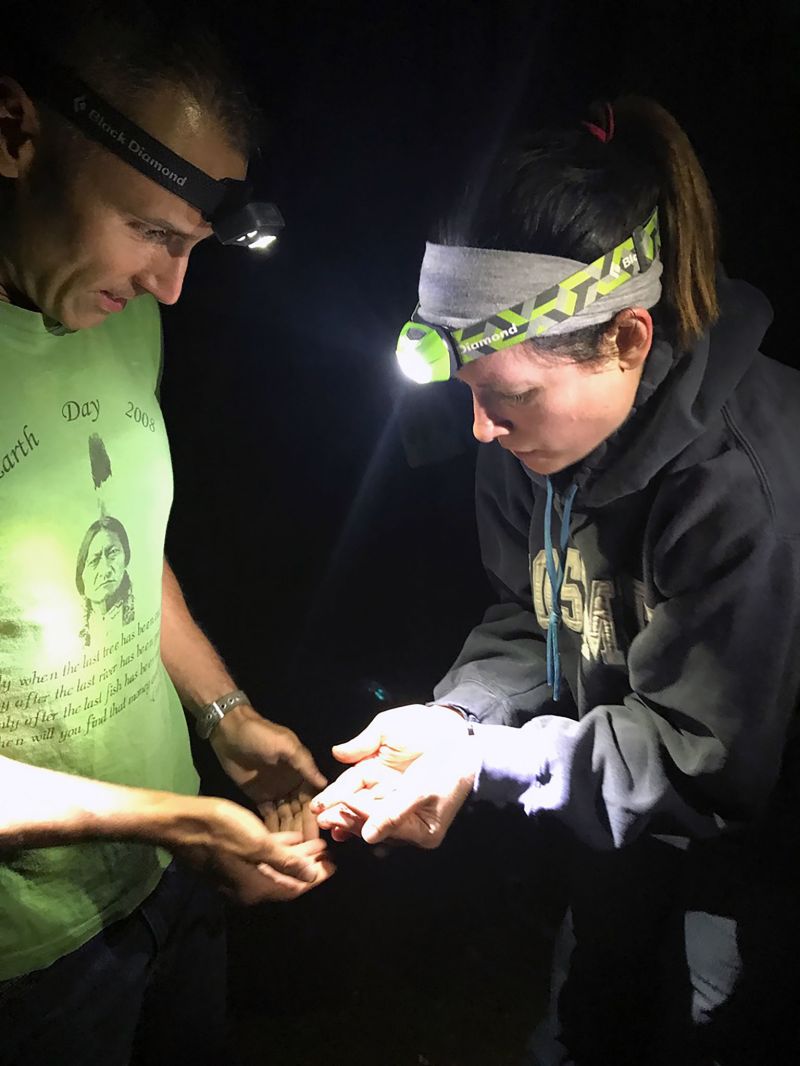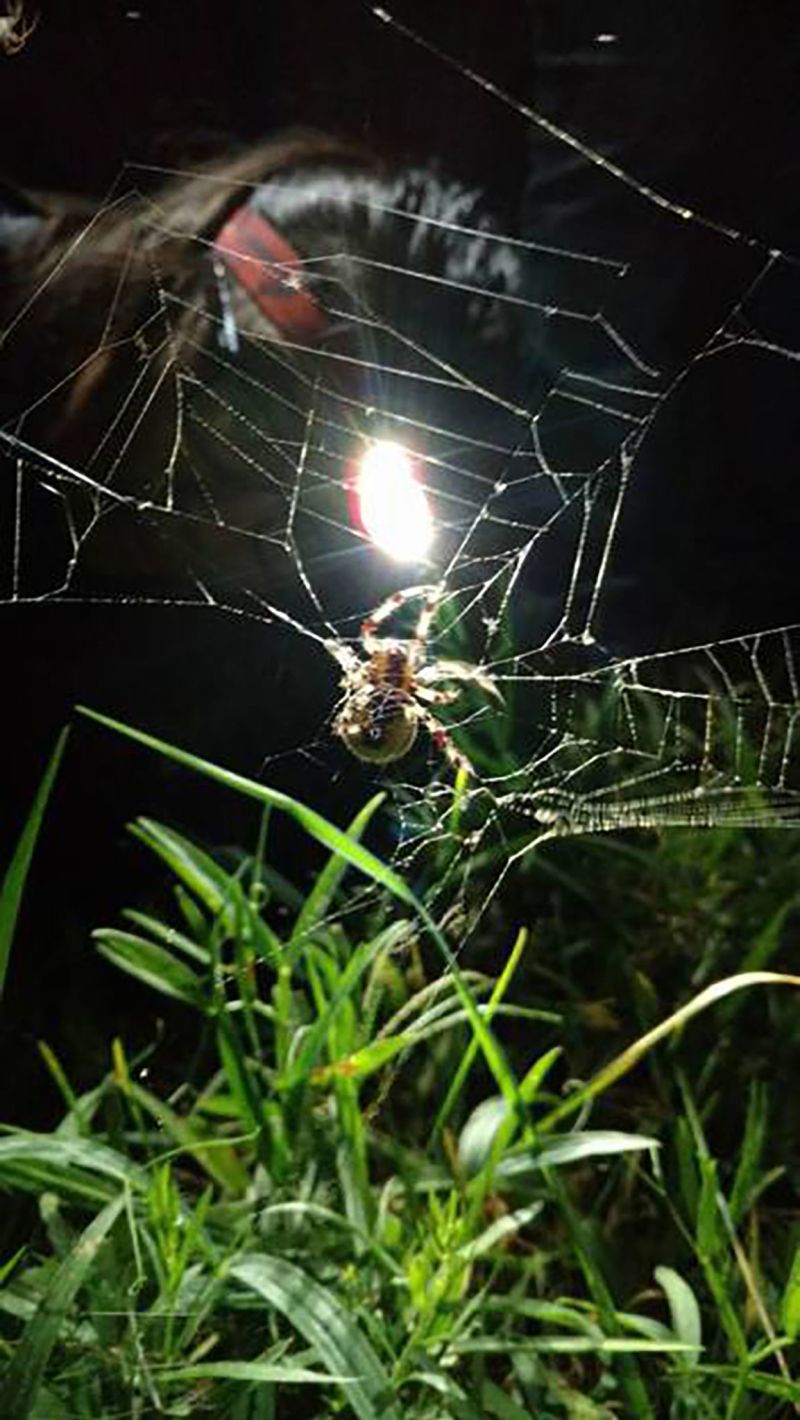Insects are a guide to biodiversity
New Philadelphia High School science teachers Kip Brady and Jennifer Black led students deep into the forest at the Norma Johnson Center as the sun dipped below the horizon. The group, with lights strapped to their heads, went in search of termites to aid their understanding of the teaming insect life of the natural world around us.
“We always start the year with insect collecting,” said Brady, who is in his 19th year teaching at New Philadelphia. “Classifying and sorting insects is an excellent guide to understanding biodiversity. We send out letters in July so the kids can get started with their collections.”
Following the clear paths through the woods, Brady and the members of the group, aided by Brady’s wife Jody, who also is a science teacher, turned over log after log. They searched for dropped heavy branches that had been resting on the forest floor for some time. Breaking the branches and small logs apart, they discovered thousands of tiny termites, carefully slipping them into plastic bags.
“These are the same species we find in homes,” Brady said.
This is not Brady’s first foray of discovery into the extensive acreage of the Norma Johnson Center. “We’ve determined in previous research that the chief insect predators here are by far various species of spiders,” he said. “We suspected that praying mantises were probably near the top as there are so many grasshoppers. But we actually found few of them. Instead we observed many grasshoppers caught in the webs of spiders.”
Brady said such explorations into biodiversity are sometimes held at the center, sometimes elsewhere in the area. “But it’s a perfect facility for us. It also helps get the community — children and parents — involved at the center. We do night hikes, explore forest ecology and strike out, looking for birds.”
The search for termites also used time while the group waited and as darkness fell for other insect species to arrive at the hike’s starting point. Black lights were set up behind sheets to attract an array of insects, where they could be easily observed and collected.
“They need to collect 20 insect species from 10 orders,” Brady said. “It helps them to understand the diversity of life. Starting out, they’re all just a bunch of bugs. But as they learn and separate them into classifications, they begin to see the great diversity of the insect world. There’s also a larger lesson to be learned. I think as a society we tend to paint everything with one color and pretend we know what we’re talking about. You have to look closely to understand what’s happening.
We accomplished what we came here to do. They’ll be able to use the insects they collected in lab work back in the classroom."
Brady said he likes to get students out of the classroom and experience learning beyond the school day.
“In the future,” Brady said, noting the relatively few students who were able to participate, ”I think we need to start organizing these hikes earlier in the year before school schedules get crazy. These kids’ time is at a premium.”
Another such black light and hike evening is scheduled for Saturday, Sept. 9 at 8 p.m. at the Norma Johnson Center. The hike will begin at the picnic shelter off Conservation Drive. The center is located on old state Route 39 between Dover and Sugarcreek. All are welcome.




